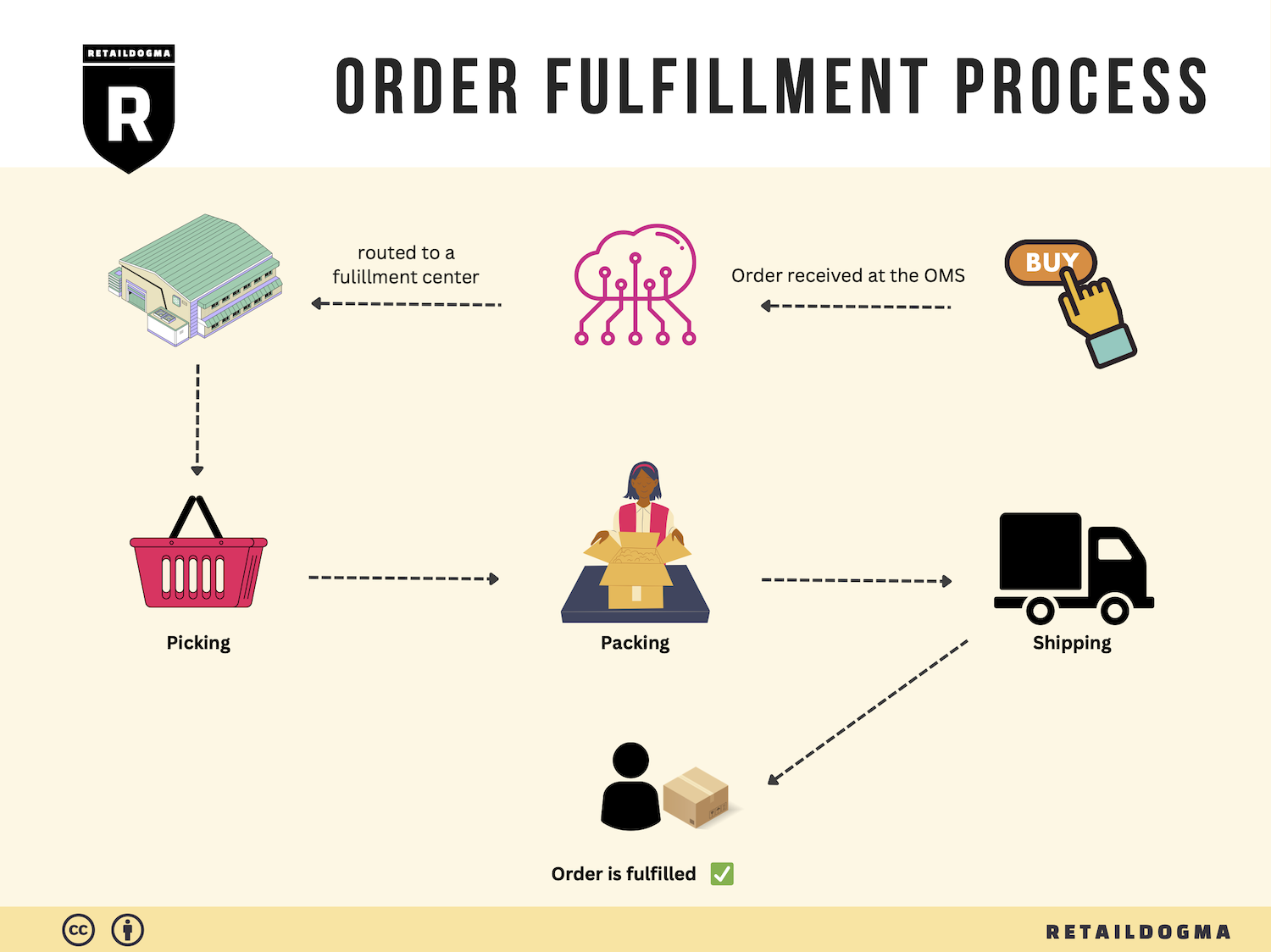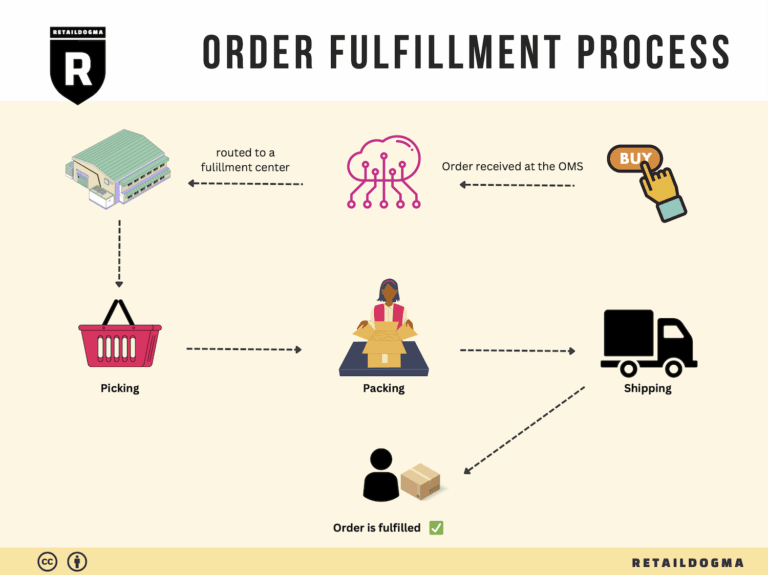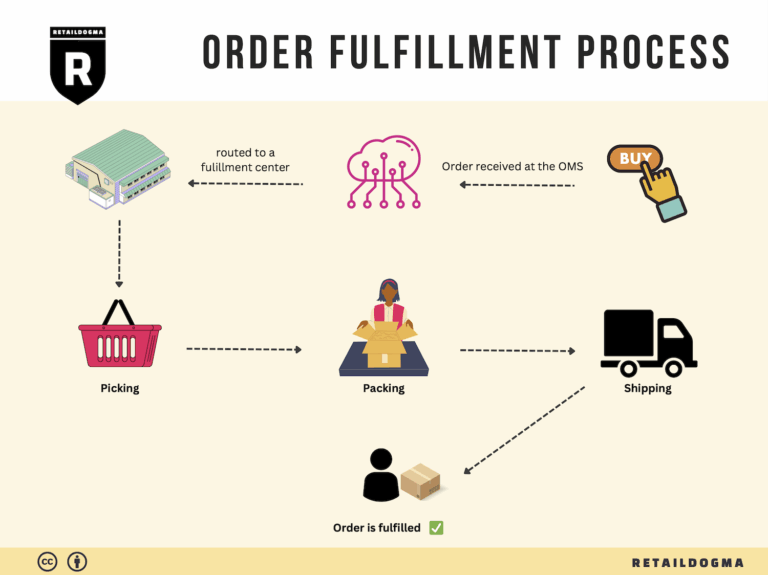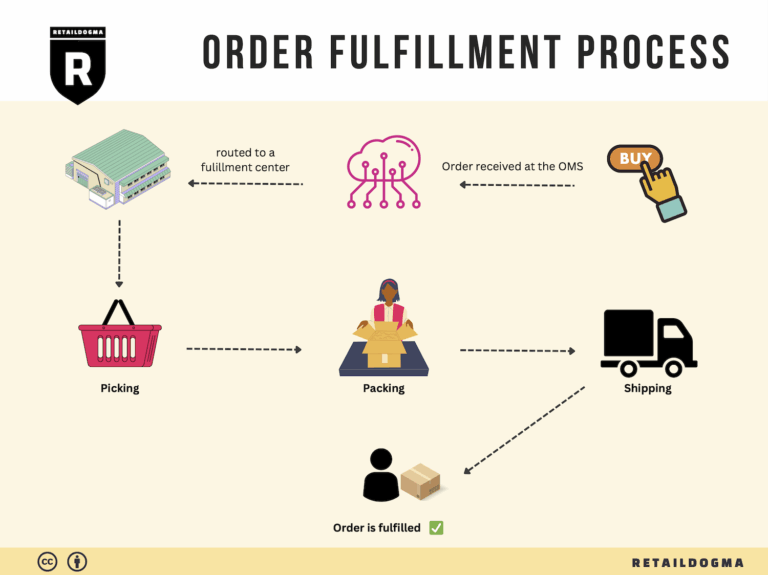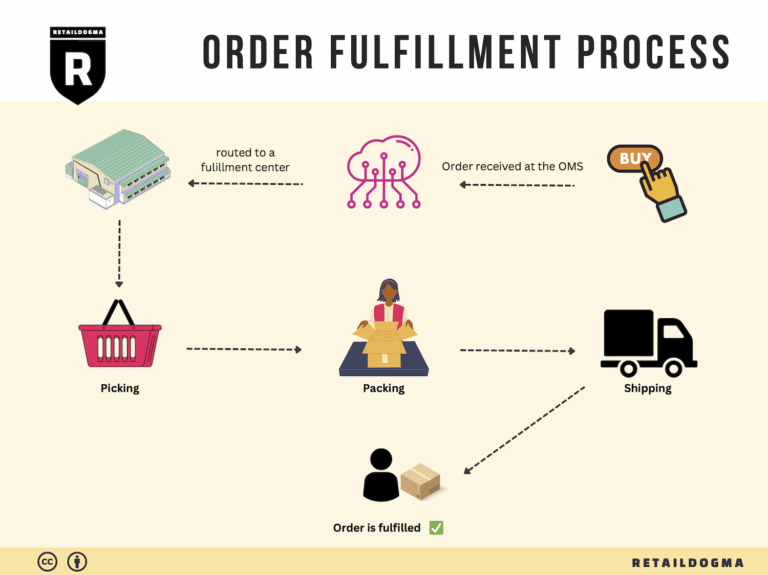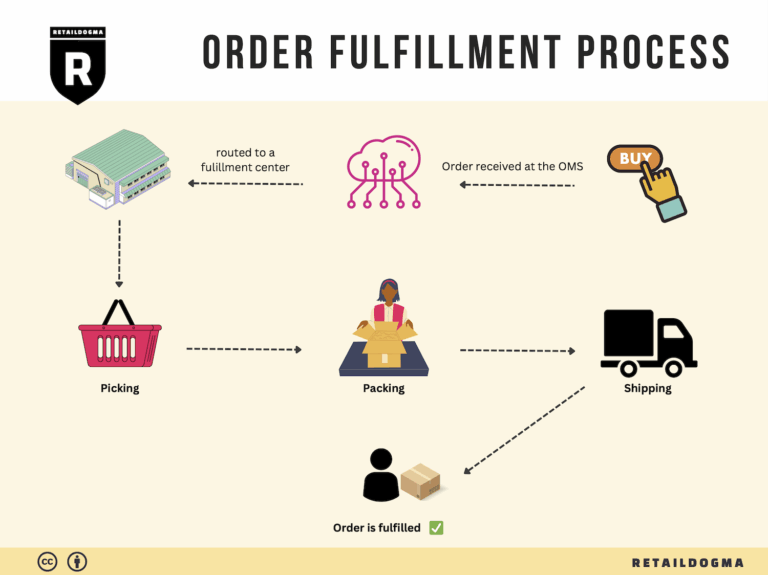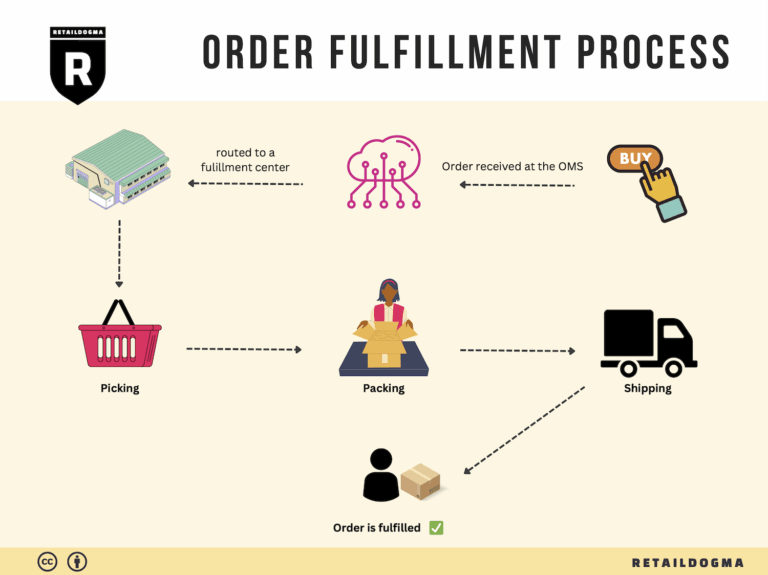How Order Fulfillment Works: A Step-by-Step Guide for Businesses
What is E-commerce Fulfillment? An Introduction for Growing Businesses
Understanding the Challenges of E-commerce Fulfillment
As an e-commerce business owner, you may often find yourself overwhelmed by the sheer volume of orders that need to be processed, packed, and shipped. The excitement of growing sales can quickly turn into a logistical nightmare if the fulfillment process isn’t streamlined. This is a common pain point for many online retailers, particularly those looking to scale. The challenge lies in efficiently managing the logistics of getting products into the hands of customers, all while maintaining a high level of service and satisfaction.
What is E-commerce Fulfillment?
At its core, e-commerce fulfillment is the process of storing, packing, and shipping products to customers after an order is placed. It encompasses everything from inventory management and order processing to shipping logistics and returns handling. As your business grows, understanding the nuances of fulfillment becomes increasingly critical, as it directly impacts customer experience, operational efficiency, and overall profitability.
What This Guide Covers
In this comprehensive guide, we will explore several key aspects of e-commerce fulfillment that are essential for growing businesses:
-
Fulfillment Models: We will delve into different fulfillment models, including Third-Party Logistics (3PL) and Fulfillment by Amazon (FBA). Each model has its advantages and disadvantages, and understanding these will help you choose the best fit for your business needs.
-
Core Services: We will outline the core services involved in fulfillment, such as warehousing, inventory management, order processing, and shipping. Knowing what services are available can help you better assess your requirements and expectations from a fulfillment partner.
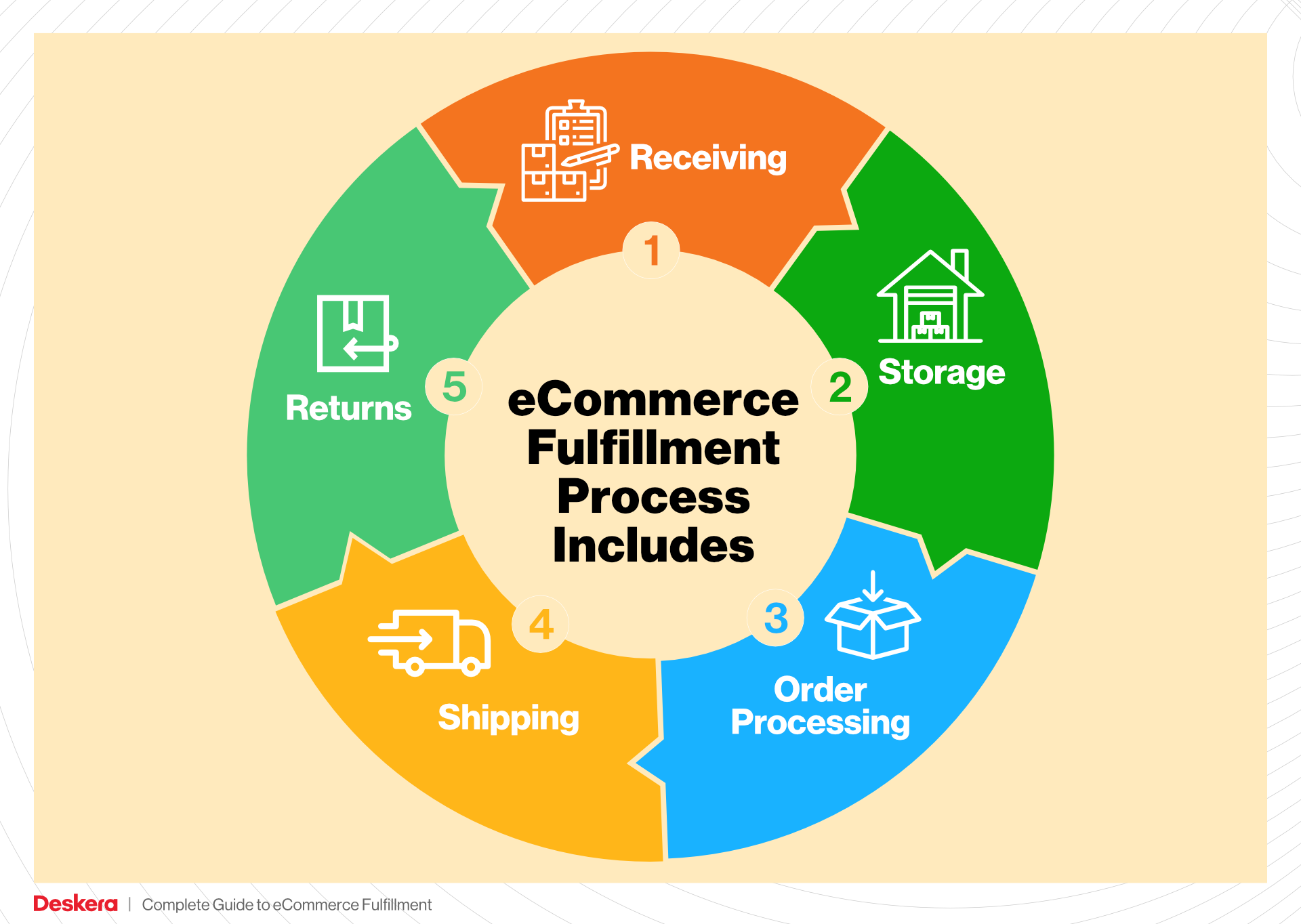
-
Choosing a Fulfillment Partner: The decision of selecting the right fulfillment partner can be daunting. We will provide practical tips on evaluating potential partners based on factors like scalability, technology integration, and service reliability.
-
Pricing Structures: Fulfillment costs can vary widely based on the services you choose and the volume of orders. This guide will help you understand common pricing structures and how to calculate costs effectively.
Empowering Smart Decisions
The ultimate goal of this guide is to empower e-commerce businesses to make informed decisions regarding their logistics and fulfillment strategies. By providing insights and practical advice, we aim to help you navigate the complexities of fulfillment, allowing you to focus on what you do best—growing your business and serving your customers. Whether you are just starting out or looking to optimize your existing fulfillment process, this guide will serve as a valuable resource in your journey toward operational excellence.
What You’ll Learn In This Guide
- What is E-commerce Fulfillment? An Introduction for Growing Businesses
- The Order Fulfillment Process: From ‘Buy’ Button to Customer’s Door
- Comparing Fulfillment Models: In-House vs. 3PL vs. Dropshipping
- A Deep Dive into Amazon FBA: Pros, Cons, and Who It’s For
- Core Services Offered by Fulfillment Centers
- How to Choose a Fulfillment Partner: A 6-Point Checklist
- Understanding Fulfillment Pricing: A Breakdown of Common Fees
- Frequently Asked Questions (FAQs) about Fulfillment
- Conclusion: Is Outsourcing Fulfillment the Right Move for Your Business?
- Important Disclaimer
The Order Fulfillment Process: From ‘Buy’ Button to Customer’s Door
1. Receiving Inventory
The first step in the order fulfillment process is receiving inventory. When products arrive at your warehouse, they must be checked against purchase orders to ensure that the correct quantities and items have been delivered. This process involves inspecting the goods for any damage and verifying that they match the specifications outlined in the purchase order.
Importance: Proper receiving procedures are critical to maintaining accurate inventory levels. Errors at this stage can lead to stock discrepancies that affect future orders.
Key Term: SKU (Stock Keeping Unit) – Each product should have a unique SKU that allows for efficient tracking and management within your inventory system.
2. Warehouse Storage
Once inventory is received and validated, the next step is warehouse storage. Items must be organized in a way that maximizes space while ensuring easy access for order fulfillment. This can involve using shelving, bins, or pallet racks.
Importance: Efficient storage solutions reduce the time it takes to find and retrieve products during the picking process. A well-organized warehouse also minimizes the risk of errors and helps maintain a smooth flow of goods.
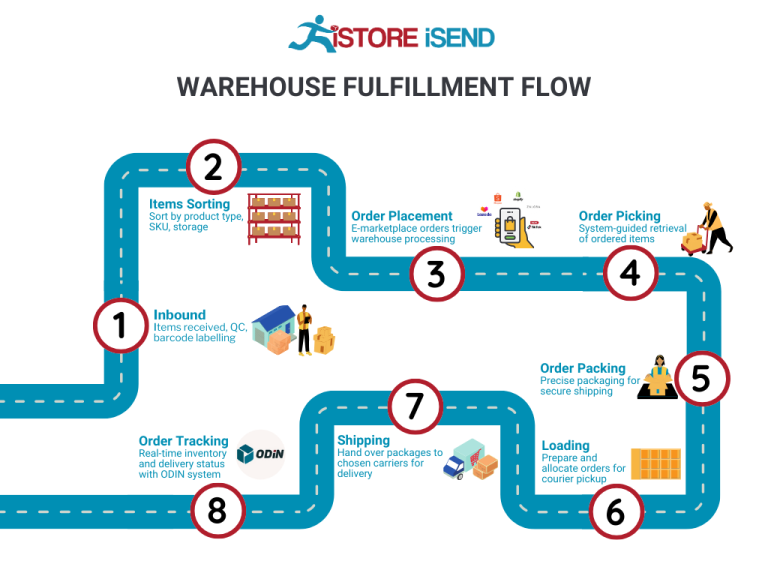
Key Term: ABC Analysis – This inventory categorization technique helps prioritize stock based on importance and turnover rates, ensuring high-demand items are easily accessible.
3. Order Picking
Order picking is the process of retrieving items from storage to fulfill customer orders. This step can vary in complexity, depending on the order volume and warehouse layout. Warehouse staff may use a pick list, which details the items and quantities needed for each order.
Importance: Accurate picking is crucial for customer satisfaction. Mistakes can lead to shipping incorrect items, which can result in returns and damage to your brand’s reputation.
Key Term: Pick Lists – These documents guide warehouse staff in selecting the right items and quantities, streamlining the picking process and reducing the likelihood of errors.
4. Order Packing
After items are picked, they move to the packing station. Here, products are carefully packed into boxes or envelopes, ensuring they are secure for shipping. This step may also involve including packing slips, invoices, or promotional materials.
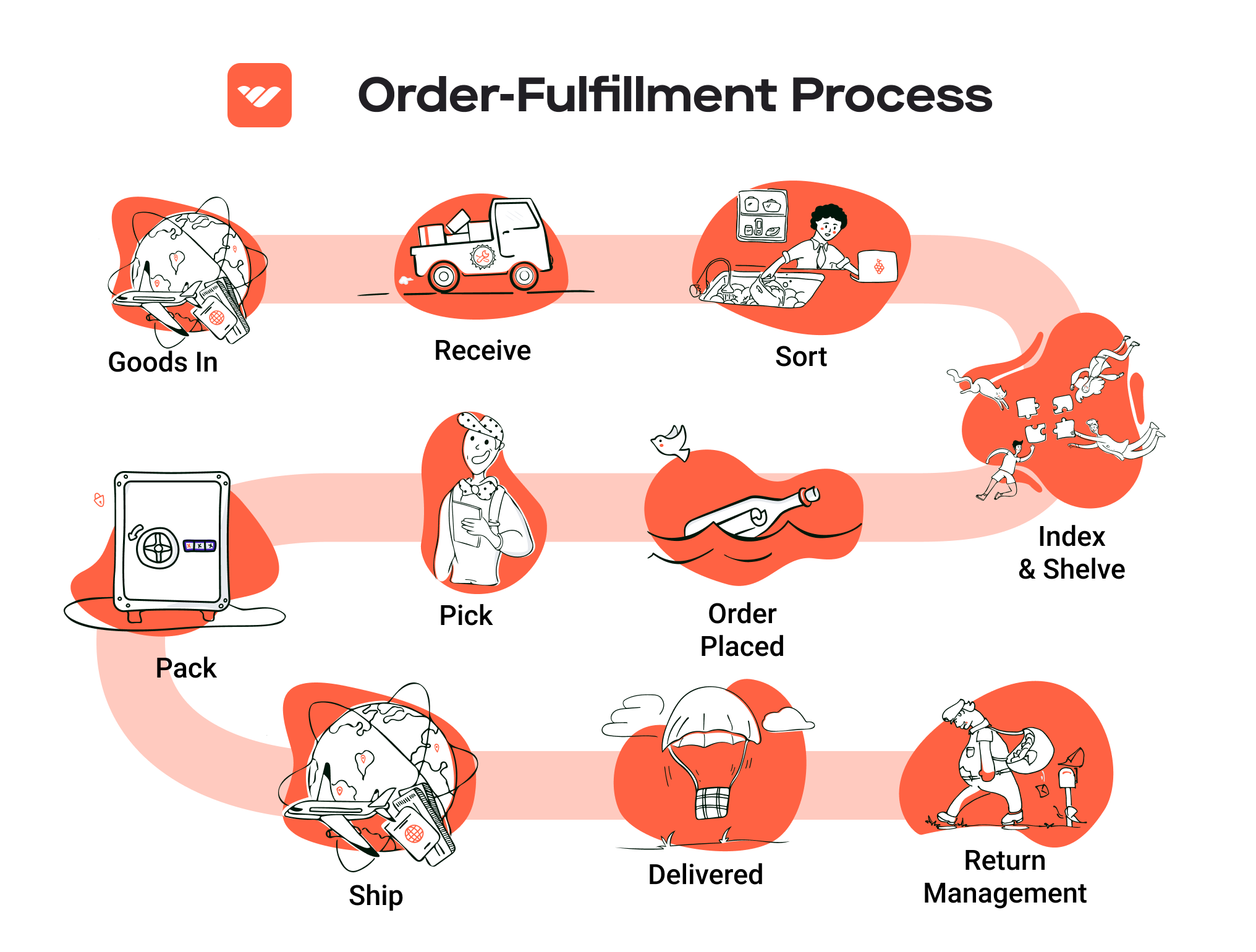
Importance: Effective packing safeguards products against damage during transit and enhances the customer experience. A well-packed order reflects professionalism and attention to detail, contributing to positive customer perceptions.
Key Term: Packing Slip – This document accompanies the shipment, listing the items included in the order, which helps customers verify that they received the correct products.
5. Shipping & Delivery
The final step in the order fulfillment process is shipping and delivery. Once packed, orders are labeled and handed over to shipping carriers. Businesses must choose reliable carriers that can meet their delivery timelines and budget constraints.
Importance: Timely delivery is a key factor in customer satisfaction. Delays can lead to dissatisfaction and lost repeat business. Therefore, selecting the right shipping method and carrier is essential for maintaining a good customer relationship.
Key Term: Tracking Number – This unique identifier allows customers to monitor their shipment’s progress, providing transparency and reassurance about their order status.
By understanding and optimizing each of these steps, e-commerce businesses can enhance their order fulfillment processes, leading to improved efficiency, customer satisfaction, and ultimately, increased sales.
Comparing Fulfillment Models: In-House vs. 3PL vs. Dropshipping
Fulfillment Model Comparison
| Model | Who Handles Inventory | Best For (Business Stage) | Key Advantage | Key Disadvantage |
|---|---|---|---|---|
| In-House Fulfillment | The business itself | Startups and small businesses | Complete control over inventory | High operational costs and overhead |
| Third-Party Logistics (3PL) | A third-party provider | Growing businesses and scaling startups | Scalable operations and expertise | Less control over shipping processes |
| Dropshipping | Suppliers | New entrepreneurs and niche markets | Low startup costs and minimal risk | Lower profit margins and inventory issues |
In-House Fulfillment
In-house fulfillment refers to a model where the e-commerce business manages its own storage, packing, and shipping operations. This model is often favored by startups and small businesses that want complete control over their inventory and customer experience. By handling fulfillment internally, businesses can tailor their shipping processes to meet specific customer needs, ensuring a personalized service.
However, while in-house fulfillment offers the advantage of direct oversight and potentially faster shipping times, it also comes with significant drawbacks. The operational costs can be high due to the need for warehousing, staffing, and the technology required to manage inventory effectively. As businesses grow, scaling in-house operations can become cumbersome and resource-intensive, leading to inefficiencies and increased overhead.
Third-Party Logistics (3PL)
Third-party logistics (3PL) involves outsourcing fulfillment operations to a specialized logistics provider. In this model, the 3PL company handles storage, order processing, packing, and shipping on behalf of the e-commerce business. This model is particularly beneficial for growing businesses that are looking to scale quickly without the burden of managing logistics internally.
The key advantage of using a 3PL is the scalability it offers. Businesses can expand their operations and enter new markets with relative ease, leveraging the 3PL’s existing infrastructure and expertise. Additionally, 3PL providers often have established relationships with carriers, allowing for potentially lower shipping rates and improved delivery times. However, the trade-off is a reduced level of control over shipping processes and inventory management. Businesses may face challenges in communication and coordination, which can affect customer satisfaction if not managed properly.
Dropshipping
Dropshipping is a fulfillment model where the e-commerce business does not keep products in stock. Instead, when a customer places an order, the business purchases the item from a third-party supplier, who then ships it directly to the customer. This model is particularly attractive for new entrepreneurs and those exploring niche markets due to its low startup costs and minimal risk.
The primary advantage of dropshipping is the low barrier to entry. Entrepreneurs can launch an online store without the need for significant capital investment in inventory. This allows for a diverse product offering without the financial burden associated with holding stock. However, dropshipping comes with its own set of challenges. Profit margins can be lower compared to traditional retail models due to the reliance on suppliers, and issues such as stock shortages, shipping delays, and quality control can arise. Additionally, businesses have limited control over the fulfillment process, which can impact customer experience.
Conclusion
Choosing the right fulfillment model is crucial for e-commerce businesses looking to scale their operations effectively. Each model—whether in-house, 3PL, or dropshipping—has distinct advantages and disadvantages that cater to different business stages and goals. Business owners must carefully assess their operational needs, financial capabilities, and long-term growth strategies to determine which fulfillment approach aligns best with their objectives.
A Deep Dive into Amazon FBA: Pros, Cons, and Who It’s For
Understanding Fulfillment by Amazon (FBA)
Fulfillment by Amazon (FBA) is a service offered by Amazon that allows e-commerce sellers to store their products in Amazon’s fulfillment centers. In return, Amazon takes care of storage, packaging, shipping, and customer service for these products. This enables sellers to leverage Amazon’s extensive logistics network and customer base, streamlining their operations while focusing on growing their business.
When a customer places an order for an FBA product, Amazon handles the entire fulfillment process. This includes picking the product from the warehouse, packing it, shipping it directly to the customer, and managing returns. As a result, sellers can provide a seamless shopping experience, similar to that of Amazon’s own products.
How FBA Works
-
Setting Up: Sellers create an Amazon Seller account and choose FBA as their fulfillment method. They then send their products to Amazon’s fulfillment centers, where they will be stored until sold.
-
Storage: Products are stored in Amazon’s warehouses until they are sold. Sellers can view their inventory levels and manage restocking through the Amazon Seller Central dashboard.
-
Order Processing: When a customer orders a product, Amazon picks, packs, and ships the product from its warehouse. Sellers benefit from Amazon’s expertise in logistics, which includes fast shipping options like Amazon Prime.
-
Customer Service: Amazon also handles customer inquiries, returns, and refunds for FBA products, allowing sellers to focus on other aspects of their business.
-
Reporting and Analytics: Sellers can access detailed reports on their sales, inventory levels, and performance through the Seller Central platform, helping them make informed business decisions.
Pros of Using FBA
Prime Eligibility
One of the most significant advantages of FBA is that products fulfill the criteria for Amazon Prime. This means they are eligible for free two-day shipping, making them more attractive to Prime members. As Prime membership continues to grow, having products eligible for this program can significantly boost sales.
Customer Trust
Amazon is a trusted brand, and by using FBA, sellers can leverage this trust. Customers often feel more confident purchasing FBA products due to Amazon’s reliable shipping and customer service policies. This can lead to higher conversion rates and repeat customers.
Multi-Channel Fulfillment
FBA allows sellers to fulfill orders from other sales channels, such as their own websites or eBay. This means that sellers can manage their inventory in one place and still provide fast shipping across different platforms, enhancing their overall efficiency.
Scalability
FBA allows sellers to scale their operations quickly. As demand for products increases, sellers can send more inventory to Amazon without needing to invest heavily in logistics or warehousing.
Time Savings
By outsourcing logistics to Amazon, sellers can save significant time on order fulfillment and customer service, allowing them to focus on strategic growth areas, such as product development and marketing.
Cons of Using FBA
High Fees
While FBA offers many benefits, it comes at a cost. Sellers must pay for storage fees and fulfillment fees, which can add up quickly, especially for low-margin products. This can significantly impact profitability, making it essential for sellers to analyze their pricing strategies carefully.
Strict Inventory Rules
Amazon has stringent guidelines regarding inventory management. Sellers must ensure they comply with these rules to avoid penalties or removal of their products from the platform. This can be challenging for those new to e-commerce or who may not have experience managing large inventories.
Commingling Risks
FBA products may be commingled with inventory from other sellers. This means that if a customer returns a damaged or defective product, it could be challenging to track down the source of the issue. Sellers might also receive returns for products they did not sell, complicating inventory management.
Limited Control Over Fulfillment
By using FBA, sellers relinquish control over the fulfillment process. This can be problematic for those who want to maintain a specific level of customer service or packaging quality. Any issues with Amazon’s fulfillment can directly impact the seller’s reputation.
Inventory Limits
Amazon imposes limits on how much inventory sellers can send to fulfillment centers, especially for new sellers. This can hinder the ability to scale quickly and may lead to stockouts during peak seasons.
Who is FBA Best For?
Fulfillment by Amazon is particularly well-suited for:
-
Small to Medium-Sized Businesses: Businesses looking to scale without the overhead of managing their own fulfillment can benefit greatly from FBA.
-
Sellers with High Volume Sales: Those who expect to sell a large number of products can leverage FBA’s efficiency and logistics capabilities to meet demand.
-
E-commerce Entrepreneurs: New entrepreneurs who want to focus on product development and marketing rather than logistics will find FBA to be a valuable resource.
-
Brands Seeking Trust: Sellers looking to build brand credibility can benefit from the trust associated with Amazon’s platform and customer service.
-
Multi-Channel Sellers: Businesses that sell across multiple platforms can streamline their operations through FBA, managing inventory from a single source.
In summary, FBA can be an excellent choice for sellers looking to simplify their logistics, improve customer trust, and grow their business. However, it is crucial to weigh the pros and cons carefully and consider whether the associated costs align with your business model and goals.
Core Services Offered by Fulfillment Centers
Inventory Management & Warehousing
Inventory management and warehousing are fundamental services provided by fulfillment centers that ensure e-commerce businesses maintain optimal stock levels and reduce overhead costs. Fulfillment centers utilize sophisticated inventory management systems that track stock levels in real-time, allowing businesses to have accurate data regarding their inventory.
The benefits of effective inventory management are manifold. Firstly, it reduces the risk of stockouts and overstock situations, both of which can significantly affect customer satisfaction and cash flow. By analyzing sales trends and demand forecasting, fulfillment centers can help businesses plan their inventory purchases more accurately, ensuring that they have the right products available at the right time.
Moreover, warehousing services provided by fulfillment centers allow businesses to store products in strategic locations, closer to their customers. This geographical advantage can lead to faster shipping times and lower transportation costs, which are crucial in today’s competitive e-commerce landscape. Additionally, many fulfillment centers offer climate-controlled storage options, which are essential for businesses selling perishable or sensitive goods.
Pick and Pack Services
Pick and pack services are crucial for the efficient processing of orders in e-commerce. In this service, fulfillment centers handle the picking of items from inventory and packing them into shipping boxes for delivery to customers. This process is essential for maintaining order accuracy and speed, two factors that greatly influence customer satisfaction.
The primary benefit of pick and pack services is the time and labor savings it offers to e-commerce businesses. Outsourcing this function allows companies to focus on core operations, such as marketing and product development, rather than the logistical aspects of order fulfillment. Fulfillment centers employ trained staff and advanced technology to ensure that orders are picked accurately and packed efficiently, reducing the likelihood of errors that can lead to returns and dissatisfied customers.
Additionally, many fulfillment centers offer customizable packing options, which can enhance the unboxing experience for customers. This personalization can help build brand loyalty and encourage repeat purchases, making pick and pack services a vital component of an e-commerce strategy.
Kitting and Assembly
Kitting and assembly services refer to the process of combining multiple products into a single package or kit before shipping. This service is particularly beneficial for businesses that sell products that are often purchased together, such as gift sets, subscription boxes, or promotional bundles.
The benefits of kitting and assembly extend beyond mere convenience. By offering pre-assembled kits, businesses can streamline their inventory management, as they only need to keep track of the finished kits rather than individual items. This can lead to a reduction in storage costs and simplify the picking process.
Moreover, kitting can enhance the perceived value of a product offering. By bundling items together, businesses can create attractive packages that appeal to customers, potentially increasing average order values. This service also allows for promotional opportunities, such as special offers on bundled items, which can drive sales during peak seasons or special events.
Returns Management (Reverse Logistics)
Returns management, or reverse logistics, is a critical service offered by fulfillment centers that addresses the complexities of product returns in e-commerce. This service involves processing returned items, restocking them if they are in sellable condition, or managing their disposal if they are not.
Effective returns management is essential for maintaining customer satisfaction and loyalty. A seamless return process can significantly enhance the customer experience, as it provides reassurance that they can easily return products if they do not meet their expectations. Fulfillment centers often implement user-friendly return policies and processes, making it easier for customers to initiate returns and for businesses to manage them efficiently.
Furthermore, efficient returns management can also provide valuable insights into customer behavior and product performance. By analyzing return data, businesses can identify trends, such as common reasons for returns, which can inform product development and inventory decisions. This data-driven approach can help businesses improve their offerings, reduce return rates, and ultimately enhance profitability.
In summary, the core services offered by fulfillment centers—inventory management and warehousing, pick and pack services, kitting and assembly, and returns management—are essential for e-commerce businesses looking to scale their operations efficiently. By leveraging these services, businesses can improve operational efficiency, enhance customer satisfaction, and ultimately drive growth in a competitive marketplace.
How to Choose a Fulfillment Partner: A 6-Point Checklist
Location & Warehouse Network
Importance: The geographical location of your fulfillment partner’s warehouses can significantly affect shipping times, costs, and overall customer satisfaction. A partner with strategically placed warehouses can ensure faster delivery to your customers, particularly if you serve a nationwide or international market.
Questions to Ask:
– Where are your warehouses located, and how many do you operate?
– How does your warehouse network align with our customer demographics?
– What are your average shipping times to key regions?
– Do you offer same-day or next-day shipping options?
Technology & Integrations
Importance: In today’s digital landscape, a fulfillment partner’s technology capabilities can streamline operations and enhance efficiency. Effective integration with your e-commerce platform, inventory management, and order processing systems is crucial for seamless operations.
Questions to Ask:
– What technology do you use for order management and tracking?
– Can your system integrate with our existing e-commerce platform (e.g., Shopify, WooCommerce)?
– How do you handle inventory management and reporting?
– Do you provide real-time tracking information for both us and our customers?
Specializations (e.g., Cold Storage, Oversized Items)
Importance: If your product range includes specialized items such as perishables, oversized goods, or fragile items, it’s essential to partner with a fulfillment provider that has the necessary facilities and expertise. Specializations can greatly impact how well your products are handled and delivered.
Questions to Ask:
– Do you have capabilities for special handling, such as cold storage or oversized items?
– What processes do you have in place for managing fragile or high-value items?
– Can you accommodate unique packaging requirements?
– How do you ensure compliance with regulations for specialized products?
Scalability & Capacity
Importance: As your business grows, your fulfillment partner should be able to scale operations accordingly. This includes having the capacity to handle increased order volumes, seasonal spikes, and new product lines without compromising service quality.
Questions to Ask:
– How do you handle peak seasons and increased order volumes?
– What is your current capacity, and how do you plan to scale?
– Can you accommodate fluctuations in inventory levels?
– How do you ensure consistent service quality during periods of rapid growth?
Pricing and Contracts
Importance: Understanding the pricing structure and contract terms is vital for maintaining profitability. A transparent pricing model that aligns with your business goals will help prevent unexpected costs and ensure you can budget effectively.
Questions to Ask:
– What is your pricing structure (e.g., per order, per item, monthly fees)?
– Are there any additional fees (e.g., for storage, returns, or special handling)?
– What are the contract terms, and is there flexibility for renegotiation?
– How do you handle price adjustments in the future?
Customer Support & Reviews
Importance: Reliable customer support can make a significant difference in your fulfillment operations. A partner that offers responsive and effective support can resolve issues quickly, ensuring minimal disruption to your business.
Questions to Ask:
– What customer support channels do you offer (e.g., phone, email, chat)?
– What are your average response times for support inquiries?
– Can you provide references or case studies from current clients?
– How do you handle issues related to order fulfillment, and what is your process for escalation?
Conclusion
Choosing the right fulfillment partner is a critical decision that can impact your e-commerce business’s efficiency, customer satisfaction, and overall success. By using this checklist, you can systematically evaluate potential partners against your specific needs and ensure that you select one that aligns with your business goals and growth trajectory. Always remember that a successful partnership is built on clear communication, mutual understanding, and shared objectives.
Understanding Fulfillment Pricing: A Breakdown of Common Fees
Initial Setup Fees
Initial setup fees are one-time charges incurred when you first engage a fulfillment service. These fees cover the costs of integrating your systems with the fulfillment center’s technology, setting up your account, and establishing workflows tailored to your business needs. The complexity of your inventory and the level of customization required can significantly influence this fee.
Typically, initial setup fees can range from a few hundred to several thousand dollars. To calculate this, fulfillment centers will assess the following:
- Integration Costs: How much work is needed to connect your e-commerce platform to their system.
- Inventory Configuration: The effort required to categorize and input your products into their database.
- Custom Workflow Setup: Any specialized processes you need, such as unique packaging requirements or specific order routing.
Receiving Fees
Receiving fees are charged when inventory arrives at the fulfillment center. This fee compensates the facility for the labor and equipment used to unload, inspect, and store your products. Receiving fees are generally calculated based on the number of pallets or boxes received and can vary widely depending on the fulfillment center’s processes.
Key factors in determining receiving fees include:
- Volume of Inventory: Larger shipments may benefit from lower per-unit costs, while smaller shipments could incur higher fees.
- Inspection Requirements: If your products require quality checks or sorting upon arrival, this can add to the receiving fee.
- Preparation Needs: Any additional services, such as labeling or kitting, will also affect the final cost.
Storage Fees (per pallet/bin)
Storage fees are ongoing costs for keeping your products in the fulfillment center’s warehouse. These fees are typically calculated on a monthly basis and can be charged per pallet, bin, or cubic foot, depending on the facility’s pricing structure.
Factors affecting storage fees include:
- Volume of Goods: The more space your inventory occupies, the higher the storage costs.
- Duration of Storage: Many fulfillment centers have tiered pricing models where longer storage periods can lead to increased fees. This is particularly relevant for seasonal businesses or items with slow turnover rates.
- Storage Conditions: Products requiring special handling, such as temperature control or hazardous materials storage, may incur additional charges.
Pick & Pack Fees (per item/order)
Pick and pack fees are charged for the labor involved in selecting items from the warehouse and packaging them for shipment. These fees can be calculated per item or per order, depending on the fulfillment center’s pricing model.
The calculation of pick and pack fees often takes into account:
- Number of Items: The more items in an order, the higher the fee, as it requires more time and labor to pick and pack.
- Packaging Requirements: Custom packaging requests or special handling may lead to increased fees.
- Order Complexity: Orders with multiple SKUs or those that require special instructions can result in higher pick and pack costs.
Shipping Fees
Shipping fees are the costs associated with transporting your products to customers. These fees can vary based on several factors, including the destination, shipping method, and carrier used.
Shipping fees are typically calculated based on:
- Weight and Dimensions: Heavier and larger packages generally incur higher shipping fees.
- Shipping Method: Options like standard, expedited, or overnight shipping will have different price points.
- Destination: Shipping to remote locations may result in additional charges compared to urban areas.
Tips for Getting an Accurate Quote
-
Provide Detailed Information: When requesting a quote, be as specific as possible about your products, order volumes, and any special requirements. This will help fulfillment centers give you a more accurate estimate.
-
Compare Multiple Fulfillment Centers: Don’t settle for the first quote you receive. Compare prices and services from various fulfillment centers to ensure you’re getting the best deal.
-
Ask About Hidden Fees: Inquire about any potential hidden charges that may not be included in the initial quote, such as long-term storage fees or additional handling costs.
-
Review Pricing Models: Understand the pricing models of different fulfillment centers. Some may offer flat rates, while others may have variable pricing based on order volume or seasonal fluctuations.
-
Negotiate: If you anticipate high volumes or a long-term partnership, don’t hesitate to negotiate rates. Many fulfillment centers are willing to offer discounts for larger commitments.
By understanding these common fulfillment pricing models and following these tips, e-commerce business owners can make informed decisions that positively impact their bottom line while ensuring efficient logistics operations.
Frequently Asked Questions (FAQs) about Fulfillment
1. What is Final Fulfillment in Black Myth: Wukong?
Final Fulfillment is a prestigious achievement within the game Black Myth: Wukong. It is awarded to players who have successfully unlocked every other achievement in the game, symbolizing their comprehensive mastery of the game’s content.
2. How do I obtain the Final Fulfillment achievement?
To unlock the Final Fulfillment achievement, you must first acquire all other base-game achievements. This requires completing various tasks and challenges throughout the game, ensuring that no achievements are missed.
3. What should I do if my Final Fulfillment achievement is not unlocking?
If you have completed all other achievements but the Final Fulfillment trophy does not register, ensure that your current game save includes all required items and upgrades. Some players have found that missing inventory items or upgrades can prevent the achievement from unlocking.
4. What is the difference between a warehouse and a fulfillment center?
A warehouse is primarily used for storing goods, while a fulfillment center is designed for order processing and shipping. Fulfillment centers often include additional services such as inventory management, order picking, packing, and shipping, making them more suited for e-commerce operations.
5. What is a 3PL (Third-Party Logistics)?
A 3PL is a service provider that manages logistics and supply chain operations for businesses. This can include warehousing, transportation, inventory management, and order fulfillment. Utilizing a 3PL allows businesses to focus on core activities while outsourcing logistics needs.
6. How much do fulfillment services cost?
The cost of fulfillment services varies based on several factors, including the volume of orders, storage space required, shipping methods, and additional services like packaging or returns management. Generally, fees can include a per-order fee, storage fees, and shipping costs. It’s essential to compare providers to find the best fit for your business needs.
7. Can I use multiple fulfillment centers for my e-commerce business?
Yes, using multiple fulfillment centers can enhance your shipping efficiency and reduce delivery times. This strategy allows you to store products closer to your customers, enabling faster shipping and potentially lowering shipping costs.
8. How can I improve my fulfillment process?
To improve your fulfillment process, consider the following strategies:
– Optimize your inventory management to ensure popular items are always in stock.
– Streamline order processing with automation tools.
– Evaluate your shipping options to find the fastest and most cost-effective methods.
– Regularly analyze fulfillment metrics to identify bottlenecks and areas for improvement.
9. What role does technology play in fulfillment?
Technology plays a crucial role in fulfillment by automating processes, tracking inventory in real-time, and providing data analytics for better decision-making. Using fulfillment software can enhance order accuracy, speed up processing times, and improve overall customer satisfaction.
10. How do I choose the right fulfillment partner?
When choosing a fulfillment partner, consider factors such as their experience in your industry, technology capabilities, scalability, shipping options, and customer service. It’s also beneficial to read reviews and request references to ensure they align with your business goals and can handle your specific needs.
Conclusion: Is Outsourcing Fulfillment the Right Move for Your Business?
Evaluating the Benefits of Outsourcing Fulfillment
Outsourcing fulfillment can be a transformative strategy for e-commerce businesses aiming to scale efficiently. One of the most significant advantages is the time saved by delegating logistics operations to a specialized partner. This allows business owners and operations managers to focus on core activities, such as marketing, product development, and customer engagement, rather than getting bogged down in the complexities of warehousing and shipping.
Additionally, partnering with a fulfillment service provides scalability. As your sales volume grows, your logistics partner can adapt to increased demand without the need for substantial capital investment in infrastructure or staffing. This flexibility is vital for businesses that experience seasonal fluctuations or rapid growth, enabling them to meet customer expectations consistently.
Moreover, fulfillment services bring expertise and technology that many businesses may lack in-house. These partners often utilize advanced inventory management systems, optimized shipping routes, and data analytics to improve operational efficiency and enhance the customer experience. Leveraging their knowledge can lead to improved delivery times, reduced shipping costs, and better overall service quality.
However, it is crucial to choose the right fulfillment partner. A misaligned partnership can lead to operational disruptions and customer dissatisfaction. Therefore, assess potential partners based on their experience, technology capabilities, and customer service track record to ensure they align with your business goals.
Call to Action
Take a moment to audit your current shipping processes. Are you facing challenges with inventory management, shipping delays, or customer complaints? If so, it may be time to consider a fulfillment partner. Evaluate your options and explore how outsourcing could streamline your operations, enhance customer satisfaction, and support your business growth. The right fulfillment partner could be the key to unlocking your e-commerce potential.
Important Disclaimer
⚠️ Important Disclaimer
The information in this guide is for educational purposes. Fulfillment services, pricing, and platform features change frequently. Always conduct your own due diligence and consult with providers directly before making business decisions.
